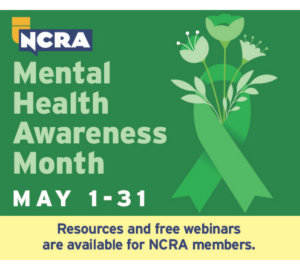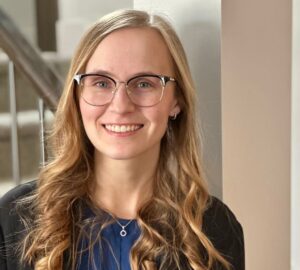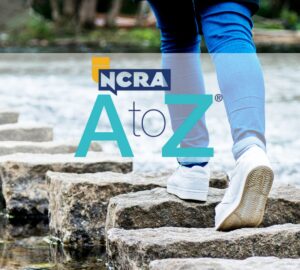A major objective included in the 2021-2024 NCRA Strategic Plan calls for an increase in public relations and marketing efforts to promote stenographic court reporting and captioning.
Specifically, the plan calls for creating tools to address the shortage in all segments of the industry, promoting stenography over digital recording and automated speech recognition, defining and promoting internally and externally the role of the professional captioner, and increasing public outreach to highlight the profession. Other objectives include educating attorneys, paralegals, and judges about the importance of using a Certified Legal Video Specialist (CLVS) and developing specific marketing tools for court reporting schools to use for recruitment.
To help meet these objectives, NCRA President Debbie Dibble, RDR, CRR, CRC, a freelance court reporter and captioner from Salt Lake City, Utah, appointed two new task forces.
The Public Relations Task Force (PROTF) is responsible for creating timely content that promotes the value of stenographic court reporters and captioners to media outlets such as print, radio, and broadcast, as well as outside organizations that currently and potentially could use such services. The task force is also responsible for developing content and training tips as identified below. The goal is to raise public awareness about the benefits of these services and the profession as a viable and rewarding career choice.
In addition, the Creative Content Task Force (CCTF), which falls under the Brand Ambassadors Council, is charged with taking the lead in producing content-rich videos for use on NCRA’s social media outlets for the purpose of sharing with members and targeted outside organizations.
“The PROTF is important to NCRA’s mission because it shows that public outreach and informing the public through the media and at public events that stenographic reporting is, one, a viable career path; and, two, a proven method of capturing the spoken word in a court of law, depositions, and in the care of captioning for the deaf and hard-of-hearing communities,” said Anthony Frisolone, FAPR, RDR, CRR, CRC, CRI, an official court reporter for the U.S. District Court, Eastern District of New York, from Brooklyn, N.Y., who chairs both the PROFT and the CCTF.
Frisolone said he is excited that the work of this group will elevate the profile of the profession so that it is front of mind in the public’s consciousness that court reporters and captioners are more than what the public sees how they are portrayed now.
“We are making some progress, but it is my hope that these task forces will allow reporting to really break into the mainstream,” he added.
As for serving on the CCTF, Frisolone said he is most excited for the opportunity to learn more about how social media can be used as a tool to attract people to the profession with both sound and imagery.
“The members of the CCTF are talented and are already doing that; we just need to focus it into a tool for advertising what the profession can offer to the public as a career and also that reporting and captioning ensure that the public has access to judicial proceedings, classrooms, theaters, and many other places the public is found,” he added.
Jill Kourafas, RPR, a freelance court reporter from Quincy, Mass., and president of the Massachusetts Court Reporters Association, serves on both of the task forces as well, and said she is optimistic that the work of the groups will result in getting the message out that stenographic court reporting and captioning are not dead-end jobs.
“We want to make sure that our industry/profession becomes a household name and topic of discussion when it comes to identifying hip, well-paying jobs that are enormously interesting,” she said.
“My hope is that we help the younger generation know that the amount of information you hear while capturing the record makes you a different person: smarter; more interesting; and more current. These younger generations that were born with a computer in their hands hold a huge potential to enter our field that is wide open and apply their coding and their computer technology to it. They have the ability to write new code to make us faster, more efficient, and apply it to other industries,” she added.
“These days every person with a smartphone is already a global broadcast station, a marketing firm, and a lifestyle exemplar for the possibilities that materialize in life for those who master the steno machine,” said Matthew Moss, RPR, a freelance court reporter from Thornton, Colo., who serves on the Creative Content Task Force.
“I am excited that we have the opportunity to amplify and reshape public awareness of stenography as a career path for a new generation that has innate advantages in rapid information processing, manual dexterity, and technological adaption because they’ve grown up as digital natives and gamers,” he said.
“I’m also very excited to collaborate with other creative minds in the field to keep raising the profile of our industry in the public consciousness. This task force will empower our members to attract more prospects into the field,” Moss added.
“We have an activist responsibility to share and to advocate for the preservation of our historical skills and for the younger generations now entering, following footsteps that will lead us all to wider paths with social media and dynamic new possibilities,” said Monette Benoit, CRI, CPE, a CART captioner and court reporting instructor from San Antonio, Texas, who serves on the PROTF.
“We want our voices and our work to remain at the forefront of this information era. As our skills advance further within the information era, we bear witness – working alongside judges, attorneys, and professionals from the government, corporate entities, educational facilities, consumers, sign interpreters, ADA consultants, and a variety of private requests,” she noted.
“We are well versed now with ‘see something, say something.’ That message could also be applied to our thousands of court reporters, CART captioners, students, and instructors when it comes to promoting the profession to consumers,” she added.
Frisolone said that members of both the PROTF and the CCTF want to encourage all NCRA members, instructors, and students to share any ideas they may have to help these working groups meet their charges.
“We need all hands on deck from our members. That means what is created by both task forces should be posted on all social media platforms, by state associations, as well as blasted to their membership about what we are creating. State associations should also issue a call to action to their local membership to form groups that focus on recruiting, mentoring, and promoting steno,” Kourafas said.
“No idea is a bad idea,” added Frisolone.
“We are open to any and all suggestions and will take them and evaluate them for the feasibility – bring it on! I know there are talented individuals in the profession who we need right now! There are talented content creators in the reporting and captioning professions at all levels from student to seasoned veteran. Contact us and let us know or show us what you have created that you think would be beneficial and that should be out there in the public space to promote the profession!”
If you want to get more involved, please volunteer! If you want to be a part of an NCRA Committee, all you need to do is let us know. Committees begin their work immediately following the annual NCRA Conference & Expo taking place each summer. Even though the Committees are finalized before the Conference, you can volunteer at any time, as we may have openings throughout the year. If we don’t have an opening, we will keep your name on file for the following year – and as our Strategic Plan covers the next three years, there will be time to be a part of something that matters to you. If you want to participate in one of the Committees, contact Laura Butler at lbutler@ncra.org.
For more information about the PROFT or the CCFT, contact Anthony Frisolone at anthony.frisolone@gmail.com.








